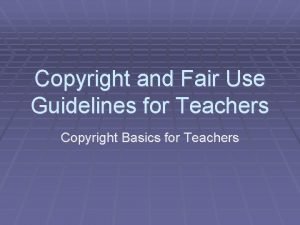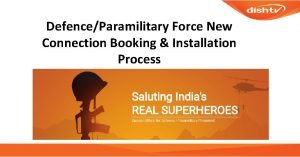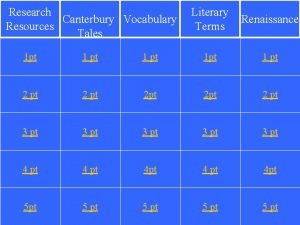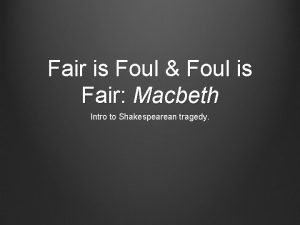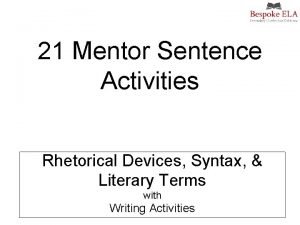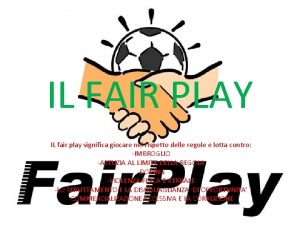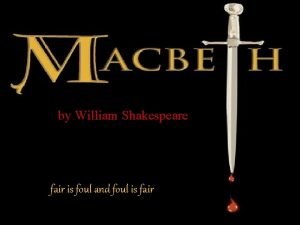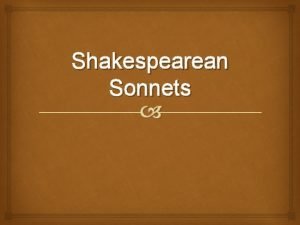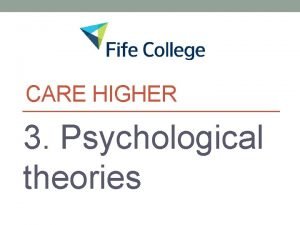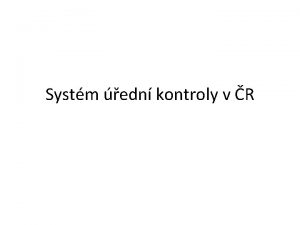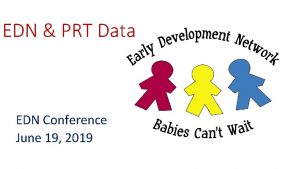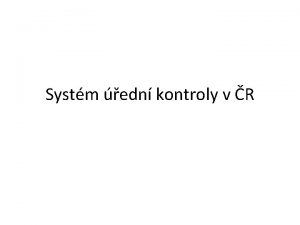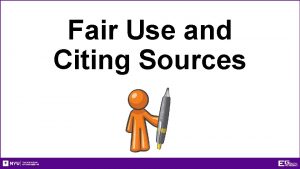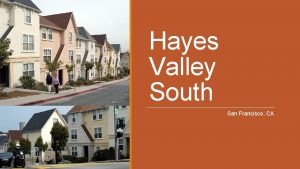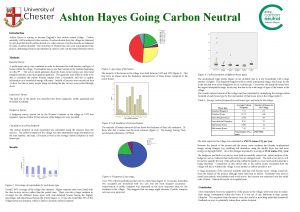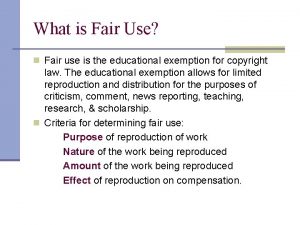FAIR USE AND COPYRIGHT Jawan M Hayes EDN











- Slides: 11

FAIR USE AND COPYRIGHT Jawan M. Hayes EDN 303 -001

10 MYTHS ABOUT COPYRIGHT 1) If there is no copyright notice, it is not copyrighted • a notice strengthens the protection • correct form for a notice is: "Copyright [dates] by [author/owner]" or ‘C’ in a circle 2) If there is no charge for it, it is not a violation • not true • still a violation if you give it away • if work doesn’t have commercial value, the violation is mostly technical and not likely to result in legal action 3) If posted to Usenet it is in the public domain • not true • granting something to the public domain is an abandonment of all rights

10 MYTHS ABOUT COPYRIGHT (CONTINUED) 4) My posting was just fair use • fair use is a short excerpt and mostly attributed • You can write the facts in your own words without penalty 5) If you do not defend your copyright you will lose it • this is not true • you can't use someone else's trademark in any way that would steal the value of the mark 6) If I make up my own stories and base them on another work, my new work belongs doesn’t to me • you need the author's permission to write a story using settings or characters from their work

10 MYTHS ABOUT COPYRIGHT (CONTINUED) 7) Copyright violation isn't a crime • you would likely be sued instead of being charged with a crime if you violate copyright 8) It's free advertising • it's up to the owner to determine if they want free ads 9) An emailed copy is not a copyright 10) Can I ever produce anything • the E-mail you write is copyrighted • copyright isn't an iron-clad lock on what can be published • copyright has two main purposes: protection of the author's right to obtain commercial benefit from valuable work and protection of the author's general right to control how a work is used

IS FAIR USE A LICENSE TO STEAL? You don't have to get permission to use copyrighted materials if the way you use the materials fall under the fair use doctrine. You still have to be careful, as the doctrine does not mean you can steal. When the fair use doctrine was created, it was done to allow the use of copyrighted works for criticism and commentary, news reporting, research, classroom instruction, etc.

IS FAIR USE A LICENSE TO STEAL? (CONTINUED) 1) Purpose and character of the use 2) Nature of the copyrighted work • use is of a commercial nature or for nonprofit educational purpose • published or unpublished • out of print • factual or creative 4 factors that determine whether a use is fair 3) Amount of the portion used in relation to the entire copyrighted work 4) Effect of the use upon the potential market for or value of the copyrighted work • Is it a reasonable amount? • Is it the most important part of the original? • Does it appeal to the same people as the original work?

IS FAIR USE A LICENSE TO STEAL? (CONTINUED) Guidelines For Educators To Copy • • • Single chapter from a book An excerpt from a work that combines words and pictures Poem of no more than 250 words or up to 250 words of a longer poem Article, short story, or essay of up to 2, 500 words, or excerpts of up to 1, 000 words Single chart, graph, diagram, drawing, cartoon, or picture from a book or newspaper Guidelines do not allow users to: • • • Make multiple copies of different material to substitute buying books or periodicals Copy the same material for more than one semester, class, or course Copy the same material more than 9 times in a semester Use copyrighted material for commercial purposes Use copyrighted material without specifying the author.

IS FAIR USE A LICENSE TO STEAL? (CONTINUED) Guidelines for the educational use of music • Multiple copies of sheet music may be copied to replace purchased copies that aren’t available • For academic purposes other than performance • Sheet music that has been purchased may be edited or simplified if the fundamental character of it is not distorted and lyrics are not altered • Single copy of a sound recording of a student performance may be made for evaluation or rehearsal • Single copy of a sound recording of copyrighted music may be made from sound recordings owned by an educational institution or an individual teacher for constructing exercises or examinations • Copying to create, replace, or substitute for anthologies, compilations, or collective works

IS FAIR USE A LICENSE TO STEAL? (CONTINUED) Guidelines for educational use off-air taping of TV and radio broadcasts : • • the program is recorded simultaneously with the broadcast the program is being broadcast for free the program is recorded only in response to a request the program is recorded but not used entirely the program isn’t altered. the tape is retained by the educational institution for less than 45 days after the recorded date. the tape is used only once with each class during the first ten consecutive school days the tape is used from the tenth to the 45 th day of the retention period for teacher-evaluation ** Ask permission before using any material about which there is a question.

COPYRIGHT ESSENTIALS FOR EDUCATORS Materials lacking the requisite limited quantity of originality, materials created by federal government employees within the scope of their employment, ideas, facts and useful articles are not protected by copyright. The rights of the copyright holder are: to reproduce the work, prepare derivative works, distribute copies of the work, publicly perform the work, publicly display the work by telecommunication and publicly perform a sound recording by digital means. Copyright protection begins as soon as an original work is fixed in a tangible medium of expression and end 70 years after the author’s life. Works for hire or anonymous works end 95 years from publication or 120 years from creation (whichever is shorter).

COPYRIGHT ESSENTIALS FOR EDUCATORS (CONTINUED) • You can request and receive permission in writing from the author after you identify, locate, and confirm the copyright holder. • Copyright infringement and plagiarism aren’t the same thing.
 Copyright basics for teachers
Copyright basics for teachers Music copyright fair use
Music copyright fair use Jai jawan canteen
Jai jawan canteen Jai jawan jai kisan was given by
Jai jawan jai kisan was given by Foul is fair and fair is foul literary device
Foul is fair and fair is foul literary device Foul is fair and fair is foul literary device
Foul is fair and fair is foul literary device Fair is foul and foul is fair macbeth
Fair is foul and foul is fair macbeth Rhetorical devices syntax
Rhetorical devices syntax Fair play slide
Fair play slide Examples of fair is foul and foul is fair in macbeth
Examples of fair is foul and foul is fair in macbeth 14 lines
14 lines Adam hayes and hopson
Adam hayes and hopson
